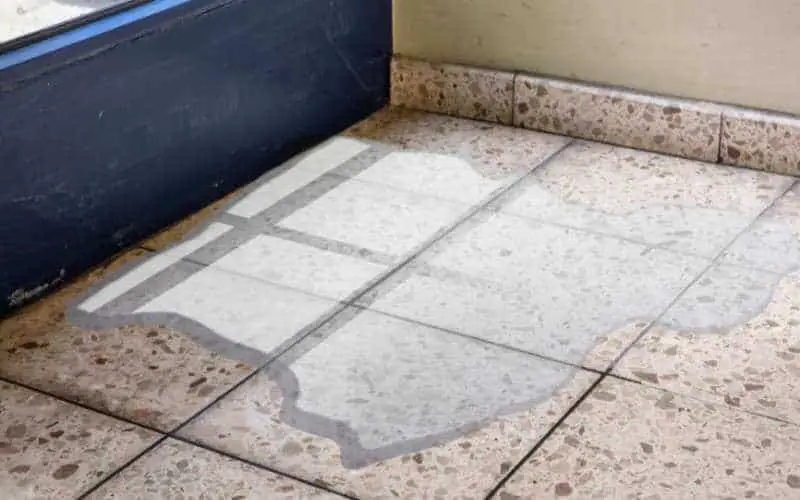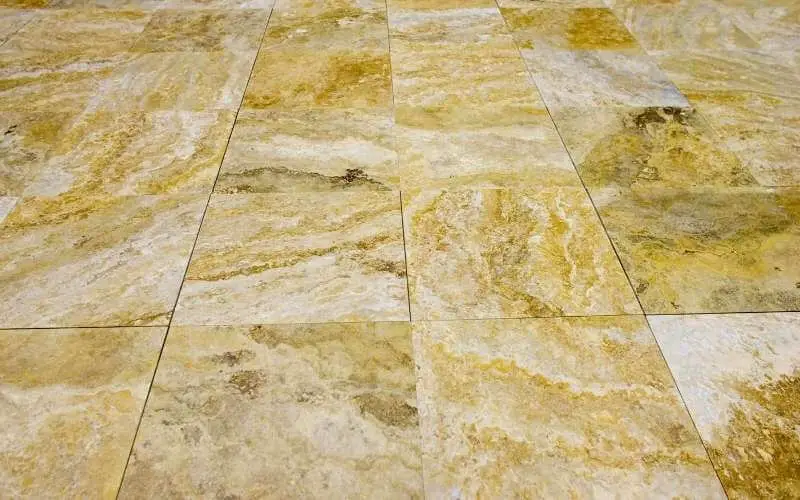Watermarks, also known as water spots, are the formation of mineral deposits formed at places where water usually runs.
You can get water marks out of marble floors using soap or hydrogen. Mineral deposits such as calcium, potassium, silica, et cetera are responsible for watermarks.
These mineral deposits are often found in substantial amounts in hard water. Watermarks accumulate over time; as hard water runs through a particular location, mineral residue gradually increases. Borehole water is the biggest culprit of this phenomenon.
Read on as we throw more light on how to get water marks out of marble floors.
Related: How to Clean White Marble Floors
What Are Marble Floors?
Table of Contents
Marble floors are natural stones. They are a kind of limestone exposed to heat and extreme pressure that leads it to its current state.
It is then cut into slabs for usage in residential and commercial buildings. Unlike Laminate Floors, Marble Floors come at a premium cost.
They are pretty expensive. Marble floors have been used for centuries. They have adorned the mansions of various heads of state palaces of kings and queens. Marble floors are luxurious and require more maintenance.
Advantages of Marble Floors
1. Marble floors are effortlessly elegant. A marble floor is the definition of elegance. The preferred floor type for the privileged and ultra-wealthy is the marble floor.
2. Marble floors take minimal effort to clean. They are resistant to moisture. A mop or dry cloth is usually sufficient to clean a marble surface.
3. Dirt is easily seen on a marble, making a build-up of any substance highly unlikely. A mop can easily clean up any of these stains.
4. Marble floors are 100% natural, which makes them eco-friendly. It is devoid of chemicals and carcinogens. Marble floors are biodegradable.
5. Marble floors are also durable. When properly maintained, marble floors can last for many years while maintaining their beauty and sophistication.
Disadvantages of Marble Floors
Marble floors are an excellent floor option for our homes and offices. As with most flooring options, there are upsides and downsides. The following are some of the disadvantages of marble floors.
1. Marble floors can get very cold during winter.
2. Marble floors require special care and maintenance. They need to be sealed when first installed and resealed at least once a year to keep them protected.
3. Marble floor surfaces are very smooth, making them incredibly slippery when wet. It is not advisable to install marble floors in your kitchen or bathrooms to be frequently exposed to moisture.
Marble floors installed in moisture-prone areas might result in periodic visits to your doctor for domestic-related accidents.
4. Marble floors are expensive when compared to other natural stones. If you’re operating within a budget, this might not be the best flooring option for you.
Read: How to Polish Marble Flooring
How to Get Water Marks Out of Marble Floors
In gathering knowledge about how to get water marks out of marble floors, the most vital rule is natural cleaners such as baking soda or vinegar are not suitable for marble floors, as they are acidic and may cause significant damage to the marble floor sealant.
These are some logical ways of getting watermarks out of marble floors.
1. Using Soap
This is probably the easiest way to get watermarks out of marble floors. Half-fill a mop bucket with water, add some mild soap and whisk with your hand.
Dip a mop into the mixture and scrub the affected area to remove the watermarks. Rinse with water after removing the soapy residue and dry with a clean white towel.
2. Hydrogen Peroxide
Remember, bleach is harmful to marble floors. However, hydrogen peroxide is a mild bleaching agent which is perfectly safe for your marble floors.
The regular use of hydrogen peroxide helps eliminate calcium (which is one of the mineral compounds responsible for watermarks) build-up on marble surfaces.
Pour a reasonable amount of cream of tartar (a dry powder and by-product of fermented grapes) on the watermark and add hydrogen peroxide to make a paste.
Scrub the mixture on the watermark with the help of clean. Leave for 30 minutes and clean up with a damp cloth. Make sure to get all the residue out.
Read: How to Clean Marble Floor in Bathroom
Conclusion
Prevention, they say, is better than cure. The key to maintaining a clean marble floor devoid of watermarks is regular cleaning of the marble floors.
Marble floors are some of the most porous natural stones available, making them highly susceptible to stains, including watermarks.
Clean immediately any stain you observe on your marble floor. Leaving stains on your marble floor longer than necessary exposes them to permanent damage.
This article examined the various causes of watermarks and how to get water marks out of marble floors. We also delved into marble floors pros and cons to better understand them and their maintenance.
We hope that this article has been of immense help to you, and when next you observe a watermark on your marble floor or countertops, you can safely remove it without causing any damage to your marble.
It is our sincere hope that this article help gives you the knowledge you require, if it did, kindly share it across your social media platforms.

